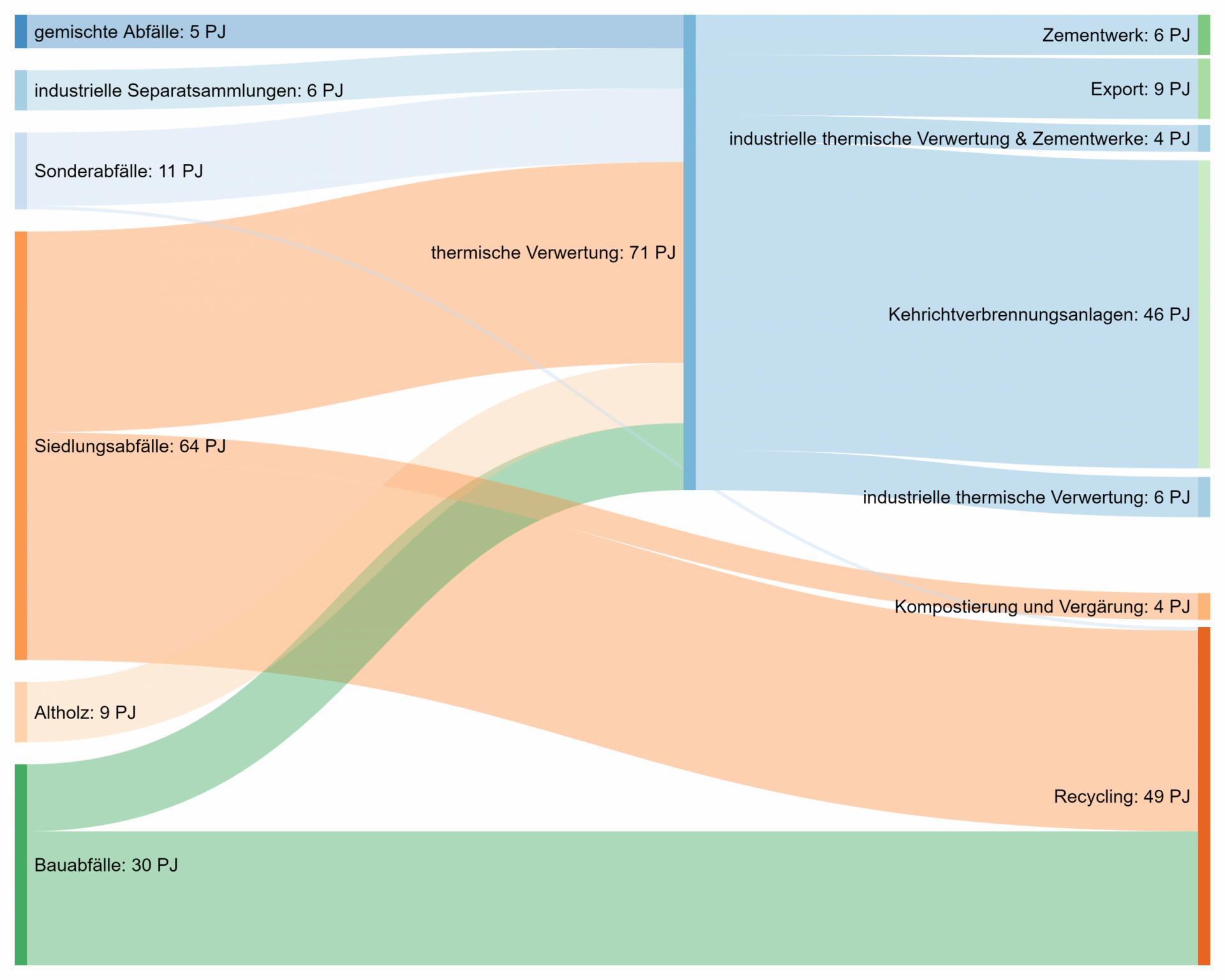Every person in Switzerland causes around 700 kilograms of waste a year. Some of this is recycled, while some is incinerated. Both processes recover energy from the waste: the thermal energy from the incineration plants is partially used in industrial processes, for the heating of housing or for the production of electricity. And in the case of recycling, the reused materials replace new raw materials and thus indirectly yield an energy gain. However, a large share of the energy contained in waste is still lost. This is shown by an investigation conducted by environmental engineers at ETH Zurich.
As part of the joint project “Waste management to support the energy turnaround”, the scientists analysed how much energy is contained in waste from private households as well as in waste with a similar composition from the industrial sector and how much of this has not been recovered until now. Based on the results, they are proposing measures in order to ensure the better recovery of waste in future.
To this end, the Zurich-based researchers created a material flow analysis and an energy flow analysis for the waste: from the front door to the waste’s ultimate recovery following recycling or the depositing of ash from waste incineration plants, all collection, sorting and transport processes were recorded and all energy flows along the entire recovery chain were calculated. The researchers also modelled all recycling and incineration processes using computers. In doing so, they likewise included the waste that is incinerated in industrial furnaces (e.g. for cement production) as well as waste that is exported abroad. Furthermore, they investigated materials that are sent for recycling: paper, cardboard, glass, metal, PET and other plastic. Using life cycle analyses, the environmental engineers also determined the overall environmental impact of the various waste types and their recovery processes – 190 individual processes were analysed to this end.
















